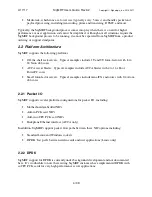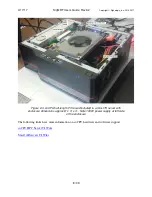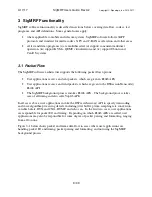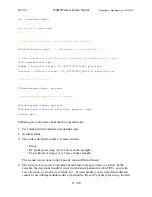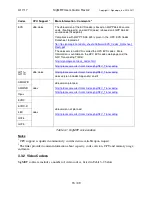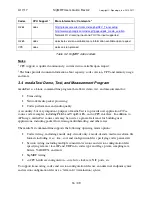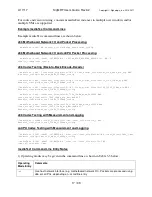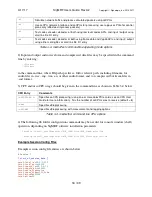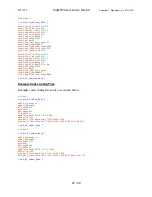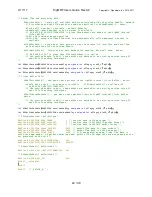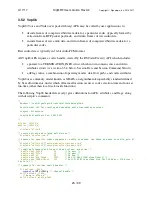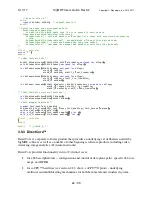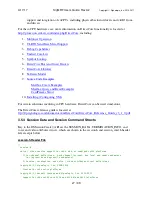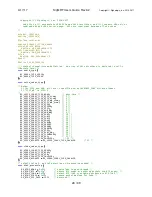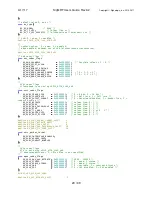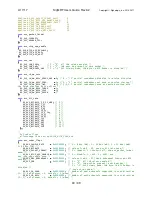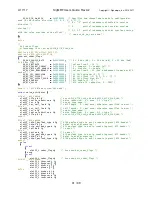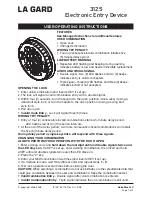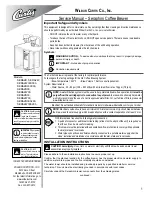
4/17/17
SigMRF Users Guide, Rev A2
Copyright
Signalogic, Inc. 2016-2017
18 / 39
-M1
Simulate network traffic and process simulated packets using coCPUs
-M2
Use coCPU network interface and coCPUs for processing, user app uses PCIe for control
plane only (x86 doesn't process packets)
-M3
Test codec encoder, decoder, or both using low level codec APIs, and input / output using
cmd line file I/O entry
-M4
Test codec encoder, decoder or both using frame data and Voplib APIs, and input / output
using either config files or cmd line file I/O entry
Table 3-3, mediaTest command line operating mode options
2) Input and output audio waveform and compressed data files may be specified in the command
line by entering:
-iFilepath
-oFilepath
in the command line, where Filepath specifies a full or relative path, including filename, for
audio files in .wav, .inp, .tim, .au, or other audio format, and / or compressed bitstream files in
.cod format.
3) CPU and/or coCPU usage should be given in the command line as shown in Table 3-4 below:
CPU Entry
Comments
-cSIGC66XX-N
Specifies coCPU processing (using one or more c66x PCIe cards, see coCPU User
Guide for more information). N is the number of coCPU cores to reserve (default = 8)
-cx86
Specifies x86 processing
-cSIGX86
Specifies x86 processing with measurement and logging options
Table 3-4, mediaTest command line CPU options
4) The following lib folder configuration commands may be needed for console window (shell)
operation, depending on SigMRF software installation parameters:
ldconfig /install_path/Signalogic/SIG_LIBS/Voice/EVS_fixed-point/lib
ldconfig /install_path/Signalogic/SIG_LIBS/Voice/EVS_floating-point/lib
Example Session Config Files
Example session config file entries are shown below.
# Session 1
[ start_of_session_data ]
term1.local_ip
=
10
.
0
.
1
.
211
term1.local_port
=
10240
term1.remote_ip
=
10
.
0
.
1
.
71
term1.remote_port
=
10240
term1.media_type
=
voice
term1.codec_type
=
G711_ULAW
term1.bitrate
=
64000
term1.ptime
=
20

